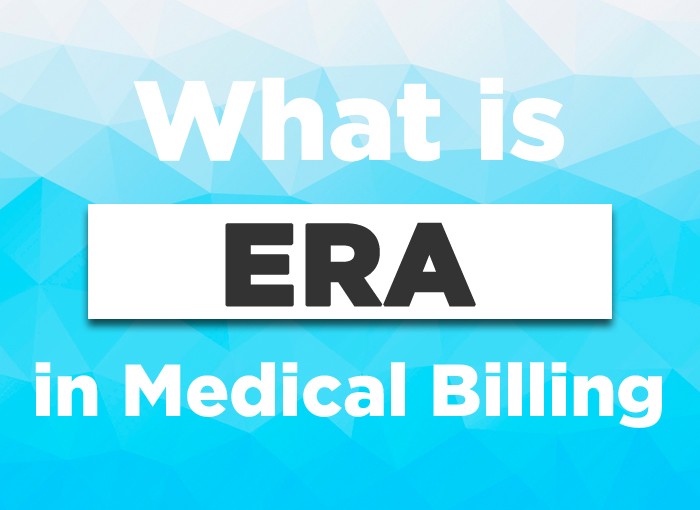What does ERA stand for in Medical Billing
A large number of claims are being processed in the healthcare industry daily. Processing these claims requires generating thousands of EOB statements regularly. However, the manual processing of many claims is both tiring and time-consuming. This means the chances of error in manual EOB are quite high and may result in incorrect payment posting. To resolve accounting issues all hospitals nowadays are switching to ERA—an HIPAA compliant that allows storing payment information for medical billing purposes. Being a technologically advanced tool, ERA is quite reliable and has the potential to boost revenue.
Definition of ERA
The term ERA stands for Electronic Remittance Advice referring to a form of electronic communication used in medical billing. The purpose of ERA is to eliminate paper-based EOB (Explanation of Benefits). The ERAs are designed to contain EOB-related information like paid claims, denied claims, final status, and payment adjustments. With the help of ERA, payment posting for insurance claims has become more efficient.
Key Components of ERA
To completely apprehend how ERA enhances scientific billing techniques, let’s down its key components:
- Claim Details: Information about man or woman claims, including provider dates, patient data, and technique codes.
- Payment Adjustments: Descriptions of modifications made to the billed amount, which include contractual duties or patient duty.
- Denial Reasons: Reasons why precise claims had been denied, permitting healthcare companies to take corrective movement.
- EFT Integration: Electronic Funds Transfer (EFT) can be paired with ERA to facilitate seamless price transactions without delay to the provider’s account.
- Provider Identifiers: Details like National Provider Identifier (NPI) or Tax Identification Number (TIN) make sure the ERA reaches the perfect healthcare company.
How ERA Works
ERA works by integrating seamlessly with healthcare providers’ billing structures. When an insurance business enterprise methods a claim, it generates an ERA, which is then sent to the healthcare company electronically. These statistics can be uploaded without delay into the issuer’s practice control machine or billing software program. The gadget automatically reconciles the bills, adjusts money owed and receivable, and updates the popularity of every declaration. This reduces manual intervention and speeds up the whole procedure, making sure to set accurate updates and economic information.
Benefits of ERA
- Automated Payment Posting: ERA allows automatic posting of insurance payments to improve accuracy, productivity, and rate of payment collection and save time.
- Checking Claim Status: ERA proves to be quite beneficial in keeping the claim status in check by segregating paid and denied claims.
- Quick Payments: ERA opens the option of electronic payments thus making payments faster. Opting for Electronic Funds Transfer (EFT) while enrolling for ERA services ensures that you get confirmation of payment along with the ERA report.
- No more Manual EOB Statement: ERA reduces the need to manually create the EOB statement. The feature helps eliminate errors, and save paper costs and time.
Outsourcing ERA Services
Outsourcing ERA services from a medical billing company allows hospitals to get a reliable service to generate remittance advice for payment posting, ERA reports, and getting maximum insurance reimbursement.
Challenges Addressed by ERA
The implementation of ERA addresses several key challenges confronted by means of healthcare companies, which include:
- Processing Time: Manual processing of claims is sluggish and exertions in depth. ERA speeds up the procedure, allowing for quicker reconciliation and charge posting.
- Claim Denials: By providing exact denial reasons, ERA allows carriers to identify styles and put into effect corrective measures to reduce future denials.
The Future of ERA in Medical Billing
As the healthcare enterprise continues to embrace generation, the function of ERA in clinical billing is ready to extend further. Integration with superior analytics equipment, artificial intelligence, and knowledge may make ERA even more efficient. For instance:
- Predictive Analytics: Future ERA structures could analyze declared patterns and expect potential denials, permitting providers to preemptively deal with troubles.
- Enhanced Security: With increasing worries over records breaches, ERA structures are probable to undertake more sturdy encryption methods and compliance protocols.
- Interoperability: Improved compatibility with numerous exercise control structures and insurance systems will make ERA even more handy to healthcare vendors of all sizes.
Conclusion
Electronic Remittance Advice (ERA) has revolutionized the clinical billing process by introducing automation, accuracy, and efficiency. By getting rid of the want for guide EOB statements and presenting features like automatic charge posting, real-time claim monitoring, and quicker payments, ERA has become an indispensable tool for healthcare carriers. As the era advances, the abilities of ERA are expected to grow, further optimizing revenue cycle control and lowering administrative burdens.
Healthcare providers who undertake ERA now not best save time and resources but also role themselves for long-time period monetary stability and fulfillment in a competitive enterprise. Whether implemented in-house or outsourced, ERA is a critical step toward modernizing clinical billing practices and improving typical operational efficiency



